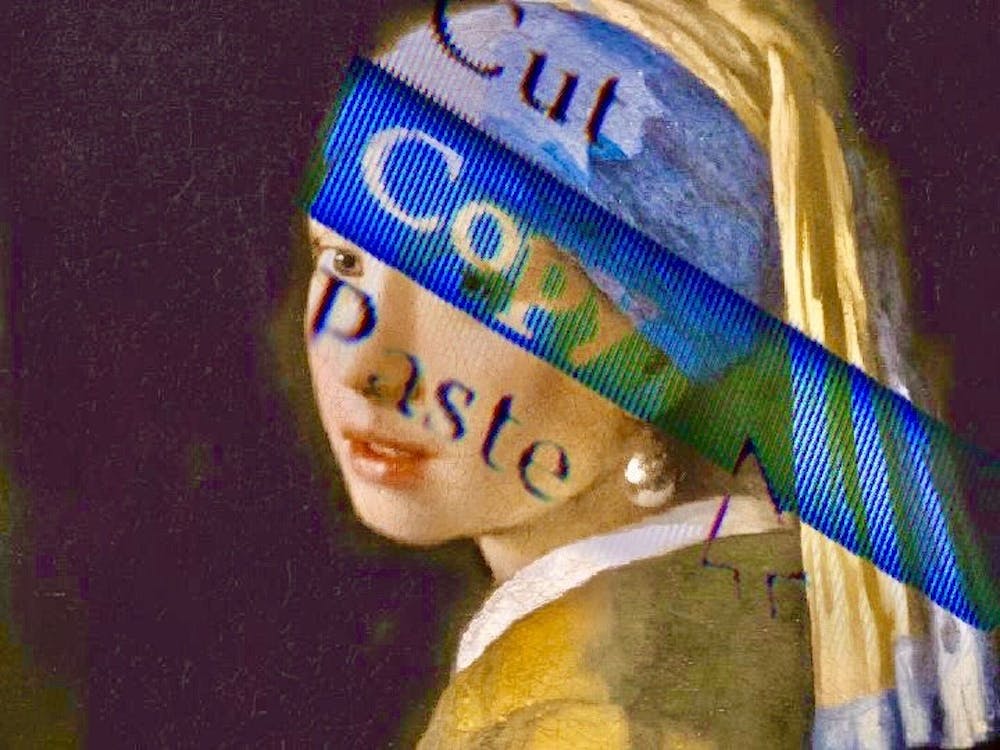Not knowing it would be the cause of his scheme’s demise, Wolfgang Beltracchi carefully added details in white paint to his energetic composition, much like Der Blaue Reiter painter Heinrich Campendonk would have. This white paint, containing an amount of titanium so small that it was not listed on the tube, marked the end of Beltracchi’s 45 million dollar early career roughly 10 years ago. But how could such a trace amount of metal cost him so much? Beltracchi did much more than emulate Campendonk—he forged both his and many other pieces by well–known artists, including Max Ernst and Fernand Léger, listing them on the global market with an incredibly high price tag and successfully conning countless museums and dealers.
While Beltracchi considers himself “one of the greatest forgers that ever existed,” he's just one mastermind on a long list of criminal artists through history. Even Michelangelo dabbled in forgery at the start of his career: by burying a stone cupid to simulate the aging process, this Renaissance man attempted to pass off his own work as that of a classical artist from antiquity. Flash–forward to the early 19th century, when Han Van Meegeren attributed 14 works to Dutch masters including Johannes Vermeer, a story retold in the recently released film “The Last Vermeer.” Around the same time, Elmyr de Hory meticulously worked to craft and sell over a thousand paintings he claimed were by Modigliani, Renoir, and Mattisse, among others.
Aside from the fact that art fraud is a crime punishable by jail time and large fines, in a way, forgery is an art in it and of itself. It's a practice that requires immense attention to detail, historical expertise, and technical genius, so much so that even the most studied professionals are duped. All materials used, from pigments to canvases, must match what would’ve been available to the original artist at the time.
Paintings must be artificially aged to match the intended date of creation and storage climate. No detail can be overlooked, which is why Beltracchi engaged in a practice he called “Free Method Painting”. Inspired by the concept of Method Acting, where an actor immerses himself in his character fully and emotionally, this allowed him to embody the original artist wholly, ultimately helping him create a more convincing and accurate forgery.
Once exposed for their swindles, forgers’ pieces drop significantly in price, despite not a single change being made to the canvas itself. Without the historically established creator to backup a composition, it loses the majority of its value and appeal—even if the image is convincing and just as enchanting as it would’ve been if real. Because of the risk that a painting may be an overvalued and deceptive fake, art forgery is one of the biggest fears of any buyer.
With multiple types of authenticity verification measures ranging from chemical tests to historical documentation to extremely detailed, close–up examination by experts, museums and art dealers invest both time and money to ensure their acquisitions are verifiable. These practices may not insure buyers from being conned, however. The shocking truth? Experts actually estimate that about 20% of works displayed in museums are misattributed, whether from forgery or from gaps in knowledge.
This begs the question — why does the art world care so much about an authentic signature? The concept of “art” is inherently nebulous, but it certainly is much more than form, shape, line, and color. Because of this, originality is one of the most valuable attributes of a work of art for connoisseurs. No matter if an image is just as remarkable and dazzling as it would have been if created by a household name, the combination of historicity as well as a unique, imaginative, and bona fide concept are elements that elevate a work to a masterpiece. While an imitator may be able to mimic any number of surface–level details, a genuine, personal relationship with the physical and ideological creation of a piece is something that cannot be faked. Art lovers will always prefer an authentic image for its fascinating origins and window–like quality that allows them to peer briefly into the genuine artist’s mind.
Forgery has existed since the genesis of art. As curatorial experts become more skilled in identifying dupes, the artistic imitators become more talented at disguising unoriginality. Counterfeit pieces, in their paradoxical artistry, challenge and will continue to challenge the integrity of the art world. No matter what, genuine and innovative artistic expression will always reign supreme.

